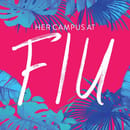Intersectionality often is a buzzword used to characterize the new wave of feminism replacing the historical cisgender, heterosexual white feminism. Yet, what does it really mean? And why is so important that we see the world through an “intersectional” lens?
Welcome to your crash course in intersectionality to open your eyes to become an intersectional feminist.
Coining the Term
Prior to the inception of intersectionality, there was not a term to denote the importance of identity politics in feminism. White women’s experiences dominated the movement leading to the invisibility of minority and marginalized women. The slogans read as “freedom for all”, yet didn’t recognize the multi-faceted nature of the oppression non-white women faced. In 1989, intersectionality was born and led to the complete reworking of modern feminism.
Feminist and Black Scholar, Kimberle Crenshaw, recognized the failure of feminism to be inclusive. She was one of few scholars actively exploring the Black female experience to reveal and demand their narratives receive equal attention. In her key works such as “Demarginalizing the Intersection”(1989), she interrogates the current lens in which sexism and racism are understood to reshape how to view the world through including marginalized groups.
Explained
In Crenshaw’s own words, intersectionality is “simply about how certain aspects of who you are will increase your access to the good things or your exposure to the bad things in life.” It the multi-dimensional nature of identity that impacts privilege and disadvantage in society. This is inclusive of every category of identity from gender to sexuality to economic status to race and beyond. The perfect metaphor to understand the concept was developed by feminist scholar Marilyn Frye in the image of the birdcage. Upon inspection of a birdcage, it is made up of many wires. If one looks too closely at one wire with a singular focus on how that wire is confining the bird, you question why the bird cannot just fly around the one wire to be free. Taking a step back to see how every wire weaves together to create the confinement and inhibit the bird’s ability to escape. As Frye explains, “It is perfectly obvious that the bird is surrounded by a network of systematically related barriers, no one of which would be the least hindrance to its flight, but which, by their relations to each other, are as confining as the solid walls of a dungeon.” The wires represent the intersecting identities that intertwine to limit access and opportunity for certain individuals in society. A Black, queer woman experiences racism, sexism, and homophobia to create a unique instance of intersectional oppression.
Intersectional Glasses
Intersectional feminism is not simply an academic theory, but a means to understand society. It is a lens to view the world. When we look through this lens, we see the intersection of these oppressions and how to better address the needs of these communities. The COVID-19 pandemic best exemplifies the importance of utilizing this lens. Black and brown communities are disproportionately affected by the health and economic effects of the pandemic. The Center of American Progress found that nine months after the initial economic downturn, “Black and Hispanic or Latino Americans still represented the higher share of job losses with unemployment rates of 9.2 percent and 8.6 percent, respectively, compared with 5.7 percent for their white counterparts.”It is the longstanding racially inequitable health care and economic systems that place these communities at greater risk for death and infection, in addition to economic insecurity. Thus, relief legislation and preventative efforts must address this on-going COVID-19 crisis with an intersectional approach that considers the unique experience of these communities.


